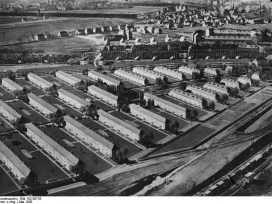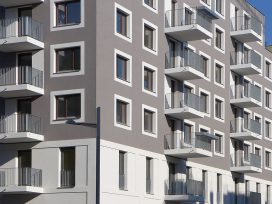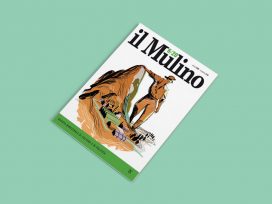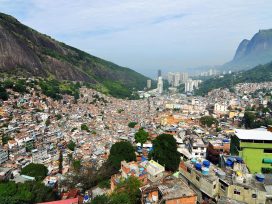The creative city has become the buzzword on the agenda of many city governments, economic developers, and cultural planners since Charles Landry introduced this idea in his book The Creative City: A Toolkit for Urban Innovators in 2000. Innovative, inward-looking and coherent as it is intended to be, the creative city rhetoric has been adopted in variation, like a universal formula, sometimes over-simplified, by city administrations, simply because the label of being a creative city provides competing post-industrial cities with a second chance to reboot and reload their profiles to make them more attractive.
The tag creative city does indeed have positive and forward-looking connotations. It advocates the use of culture for fostering the creativity of cities and regions to revive local economy and to mark places symbolically as different. Following this logic, the creative city rhetoric does seemingly grant arts and culture an authoritative role on the urban development agenda. Although cultural and urban planning have never before been officially teamed up so intimately, the use of culture as a tool for urban and image regeneration is not an entirely new movement.
Since the increase in economic globalization, the shift of the urban economy from production to consumption, and the corresponding rise of the leisure and entertainment industry, culture has long been deployed for economic motives. Sociologist Sharon Zukin described this as our symbolic economy. She insightfully analyzed that the production of space and symbols are the key parallels inside the symbolic economy. Approaching the 1990s we witnessed what Evans Graeme described as the urban renaissance in major and post-industrial cities around the world. We have more flagship museums, cultural landmarks, art biennials, waterfront and city-centre cultural clusters in cities across the globe, not to mention the ever increasing numbers of replica or newly-constructed heritage and cultural sites that make our cities so much more attractive to visit. In Europe, the European Capital of Culture officially supports two cities each year in transforming their culture base and showcasing it to the world.
These cultural strategies for place promotion and urban regeneration, or the so-called cultural-led urban regeneration, despite their good intentions, have intensified the speed of commodification of culture and are further stifling the competition between cities and the festival marketplace phenomenon described by John Hannigan. In our increasingly competitive and interconnected world, the cultural-led urban regeneration and creative city logic have spread across the globe and been picked up by municipal administrations in Singapore, Hong Kong, and Taiwan: Singapore’s waterfront Esplanade, a large-scale performing arts landmark, was opened in 2002; Hong Kong has planned an ambitious 40-hectare West Kowloon Cultural Quarter, still pigeonholed after more than a decade of discussions and planning.
Making places and identities
Amidst the global competition of increasingly footloose capital investment, tourists and talents, it has become almost inevitable that cities are craving tried and tested recipes to boost their profiles, their infrastructure, and to build up an attractive and unique image. The lucrative tourist industry and economic globalization have authoritative effect on the construction of our urban landscape – urban redevelopment, gentrification, the displacement of disadvantaged groups, social segregation, and the privatization of public space are only some of the corresponding effects.
Place-making and urban design have become key issues for urban planners and city administrators. The aforementioned cultural places for direct consumption, leisure, experience and entertainment are created from scratch to produce programmed meanings and inscribed identities. With this making of places for quick consumption the city’s complex multi-layered cultures are often reduced to a single entity. This is the background to the urban cultural project Urban Imaginary Series: Cities of Desire, an initiative intended to instigate a critical discourse on the top-down place-making strategies and image representation in city regions worldwide while spotlighting art practices that act as strategies of resistance against the aforementioned hegemonic place-making rhetoric.
The project, including the exhibition, is a critique of the frantic imaging politics and culturalization of urban space and the neutralization of political spaces through cultural means, and an exploration of how urban narratives can be reconstructed through artistic interventions. How can urban space be re-appropriated by artists or community initiatives to create inventive experiences? What are the strategies of resistance against the current production of places and identity?
Indeed, being useful resources and elements for place-making, art and culture have been gradually recognized as interim solutions to our urban problems, or, to a certain extent, contemporary life in general. The late advocacy and increasing financial support of public art in many European cities proves the point here. The Drive Thru Gallery project was planned from 2007-2010 in Aschersleben, Saxony-Anhalt, Germany. In this project windows of uninhabited houses and specially erected billboards in the polluted desolate inner city centre function as surfaces for display of art and provide a visual experience for passing motorists, intended to attract attention to this shrinking city before the local government instigates any new measures.
Over the last few years we have witnessed an increasing number of art exhibitions held in different urban and spatial settings. Some genuinely attempt to engage in a critical urban discourse and enhance the interaction in the public domain, like the former two editions of the Istanbul Biennials, curated respectively by Hou Hanru (2007), and Charles Esche and Vasif Kortun (2005). Others are more site-specific experiments, including two innovative projects organized by OK Center for Contemporary Art. These were Schaurausch (2007), an urban exhibition spread across the inner city of Linz, where display windows and the interiors of commercial premises were used as display surfaces, and Tiefenrausch (2008), a recent large-scale exhibition in the underground world of Linz. In this project the audience was led into a labyrinth of underground passages where new media and installation work was shown in an extraordinary setting well beyond the white cube.
Interventions as alternative place-making
The project Urban Imaginary Series is looking for alternative cultural strategies in a specific urban context. Accordingly, the project focuses on different forms of urban interventions. Interventionists usually have their own political agenda. They operate of their own free will, without commission (or authorization, for that matter), moving into the social realm, addressing socio-political issues and speaking to the general public outside the glossy gallery or museum space.
There is a fine line between art in public space and urban interventions. The question as to what the cultural practices are that help to create democratic forms of expression in our prescribed urban environment are to be addressed in a roundtable discussion of the place-making politics of competing cities. Representatives from cultural institutions, public art funding bodies, interventionists, and community art groups will discuss the problems and perspectives of top-down and community-based place-making strategies.
City Mine(d), one of the speakers at this roundtable discussion, is a production house for urban interventions with its origins in Brussels and affiliated offices in London and Barcelona. As a non-profit organization it initiates urban art projects that intersect between arts, urban sociology and the exploration of new modes of public governance. Within the ten years since its inception they have completed numerous interventions and research projects that engage the public with the city through art interventions and deal with the issue of public empowerment. Micronomics is a current project by City Mine(d), that envisages new forms of economic and social exchange systems on a micro-level, implemented in Brussels, London, and Berlin.
Another supporter for bottom-up initiative is Scott Burnham. He curated Urban Play with Droog Design within the ExperimentaDesign biennial in Lisbon, Portugal (20 September-2 November 2008). Burnham is an obvious supporter of open source culture and its physical and social manifestation in urban life and the cityscape. Besides exhibiting illegal interventions – and thereby raising questions regarding the effectiveness of the prevalent city planning in engaging its citizens socially and culturally – new interventions will be created by a group of commissioned designers and architects from across the globe aiming to engage citizens with their own urban environment and provoke interaction with the city’s system. Conceptually, Urban Play provides an open platform to let citizens discover the prescribed environments they are living in, and above all to remind them of the role they could play in adjusting these predetermined urban conditions to more socially oriented ones – as an innovative response to current generic city developments.
Roadsworth is one of the interventionists of Urban Play, a Canadian street artist who has been painting cycle paths on the streets of Montreal since 2001. His work, which often appears as large-scale stenciling on the roads, addresses environmental issues triggered by international political and economic developments. Despite being caught and threatened with heavy fines for over 50 charges of public mischief, he continues his interventions in public space and has received numerous commissions.
Indeed, ever since artists like Barbara Kruger, Hans Haacke and Jenny Holzer began using urban space as their canvas and made political art a genre in the 1980s, and thanks to the sound foundation that the Situationist International has lain for artists working in and on the urban arena, urban art intervention has slowly become a catchword both at international biennials and on the local home front. The question as to whether urban intervention is becoming too fashionable and incorporated into institutional structures, and so risks losing its critical voice, will also be addressed.
Vienna and Hong Kong – differences and parallels
The exhibition Cities of Desire juxtaposes two antipodean cities, not for the sake of comparison but to highlight differences and possibilities. Both Vienna and Hong Kong are prototypical cities as popular tourist destinations. There are common grounds in their top-down place-making campaigns: Hong Kong has adopted a lopsided imaging and place promotion methodology, the Asian World City title has pushed its capitalistic and profit-oriented urban development even further. Its cityscape and its local culture have been suffering dramatically from the late urban redevelopment campaigns. In a mere decade after the end of colonial rule, local citizens have witnessed the demolition of numerous valuable cultural sites (see dérive 29: Demolition of Star Ferry Pier), the exhaustion and destruction of the natural landscape and the continuous privatization of public space. In contrast, Vienna has continuously exhausted its cultural treasures, both classical and contemporary, with a constructed image of an artistic bourgeois European city. However, this image largely ignores a significant migrant population from Eastern and Southern Europe while a centralized and sanitized inner-city development intensifies the segregation of racial groups.
However, the Urban Imaginary Series is not intended to preach but to search for options and new perspectives. The exhibition focuses on displaying cultural practices in both cities that engage in alternative place-making and the empowerment of community-driven initiatives. Re-making places, reclaiming the street, temporarily using public spaces to enhance participation, and discussions. Art does not necessarily solve problems in our contemporary world, but it should at least retain its role to critique, experiment, and make waves.
Urban Imaginary Series: Vienna and Hong Kong is an urban cultural exchange project at the intersection between art, architecture and cultural policy, initiated by Hilary Tsui.
Exhibition
Cities of Desire
IG bildende Kunst, Gumpendorferstraße 10-12, 1060 Wien
26 September – 31 October 2008
Urban Interventions:
Martin Krenn, Machfeld
More under: www.city-transit.org






